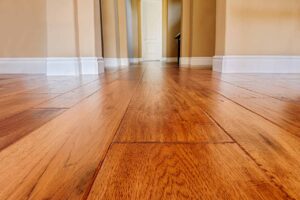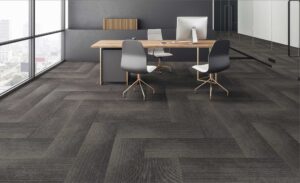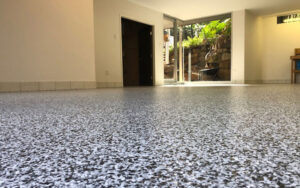Are you tired of walking on floors that feel like they’re made of cardboard? Look no further! We’ve got all the answers you need when it comes to choosing the best type of floor for your home.
From durability and ease of maintenance to aesthetics and comfort, we’ve done the research so you don’t have to. Get ready to step onto a floor that’s not only stylish but also practical.
Let’s dive into the world of flooring and discover which option reigns supreme.
Key Takeaways Which Type of Floor Is the Best and Why
- Durability and longevity are crucial factors to consider when choosing a flooring material.
- Ease of maintenance and cleaning tools and practices can simplify floor maintenance routines.
- Aesthetics and design options vary among different flooring materials, allowing for customization and personalization.
- Comfort and noise reduction can be enhanced by selecting flooring materials with built-in cushioning or sound-absorbing properties.
Durability and Longevity
One of the most important factors to consider when choosing a floor is its durability and how long it will last. Impact resistance and durability are key aspects that determine the longevity of a floor. Floors that can withstand heavy foot traffic, dropped objects, and other impacts without showing signs of wear or damage are highly desirable.

Additionally, the lifespan and wear resistance of a floor are crucial considerations. A durable floor should be able to endure years of use without deteriorating or needing frequent repairs or replacements. By choosing a floor with excellent impact resistance, durability, long lifespan, and high wear resistance, you can ensure that your flooring investment will last for many years to come while maintaining its pristine appearance.
Ease of Maintenance and Cleaning
Maintaining and cleaning floors becomes easier with certain materials. When it comes to keeping our floors in pristine condition, there are a few time-saving cleaning techniques and eco-friendly cleaning products that can make the task more efficient.

Here are four essential tools and practices that can simplify your floor maintenance routine:
- Microfiber mop: This versatile tool effectively traps dirt and dust without scratching the surface, making it ideal for various types of flooring.
- Vinegar solution: Mixing equal parts vinegar and water creates a natural and cost-effective cleaner for most floor surfaces.
- Baking soda paste: Stubborn stains can be tackled by creating a paste with baking soda and water, gently scrubbing the affected area, then rinsing thoroughly.
- Floor protectors: Using furniture pads or glides underneath heavy objects prevents scratches or dents when moving them across the floor.
Aesthetics and Design Options
When it comes to choosing flooring materials, it’s important to consider the aesthetics and design options available. Not only do we want our floors to be functional and durable, but we also want them to enhance the overall look of our space.

One key aspect to consider is sustainability and eco-friendliness. Many flooring options today are made from recycled or renewable materials, helping reduce our environmental impact. Additionally, customization and personalization options are becoming increasingly popular. From unique patterns and colors to personalized designs and logos, there are endless possibilities for creating a floor that reflects your style and personality. To give you a better idea of the design options available, here is a table showcasing some popular flooring materials along with their aesthetic features:
| Flooring Material | Aesthetic Features |
|---|---|
| Hardwood | Warm, timeless |
| Laminate | Affordable |
| Tile | Versatile |
| Vinyl | Water-resistant |
| Carpet | Soft, cozy |
With these sustainable choices and customizable options, you can find the perfect flooring material that not only looks great but also aligns with your values.
Comfort and Noise Reduction
To enhance your comfort and reduce noise in your space, consider choosing flooring materials that have built-in cushioning or are designed to absorb sound. Here are some options to consider:
- Carpet: Carpets provide softness underfoot and excellent insulation against noise. They can help create a cozy and comfortable environment.
- Cork: Cork flooring is not only eco-friendly but also offers natural cushioning. It absorbs sound effectively, making it a great choice for rooms where noise reduction is important.
- Rubber: Rubber flooring is known for its durability and impact resistance. It also has excellent sound-absorbing properties, making it ideal for areas where noise reduction is desired.
- Luxury Vinyl Plank (LVP): LVP combines the look of hardwood with the softness and insulation benefits of vinyl. It provides a comfortable walking surface while reducing noise transmission.
Choosing flooring materials that prioritize softness and insulation can greatly enhance your comfort and create a quieter living space.
Cost-effectiveness and Value for Money
If you’re looking for cost-effective flooring options that provide value for money, consider materials like laminate or vinyl that offer durability and easy maintenance. These types of flooring are not only affordable but also require minimal upkeep, making them ideal choices for budget-conscious individuals.
When it comes to installation process, both laminate and vinyl floors are relatively easy to install. They can be installed over existing flooring or subfloors with minimal preparation work. This saves time and labor costs compared to other types of flooring that may require more extensive installation procedures.
In terms of environmental sustainability, laminate and vinyl floors have made significant strides in recent years. Many manufacturers now offer eco-friendly options that use recycled materials and low-VOC adhesives, reducing their impact on the environment. Additionally, these floors have a longer lifespan compared to some natural materials, such as hardwood, which reduces the need for replacement and further contributes to sustainability efforts.
To provide a clearer understanding of the cost-effectiveness and value for money offered by laminate and vinyl floors, here is a table comparing key factors:
| Factors | Laminate Flooring | Vinyl Flooring |
|---|---|---|
| Cost | Affordable | Budget-friendly |
| Durability | Resistant to wear | Resilient |
| Maintenance | Easy to clean | Low upkeep |
| Installation Process | Simple installation | Quick installation |
| Environmental | Recycled materials | Eco-friendly |
As shown in the table above, both laminate and vinyl flooring options excel in terms of cost-effectiveness, durability, ease of maintenance, straightforward installation process, and environmental sustainability. Therefore, if you want an affordable yet high-quality floor that offers long-term value for your money while considering environmental concerns as well as convenience during installation process; laminate or vinyl flooring would be excellent choices.
Frequently Asked Questions
Are There Any Specific Cleaning Products or Methods That Should Be Avoided When Maintaining and Cleaning Certain Types of Floors?
When maintaining and cleaning certain types of floors, it is important to avoid using cleaning products that can damage or discolor the surface. Instead, opt for alternative cleaning methods that are safe and effective for the specific floor material.
Can Hardwood Floors Be Refinished to Restore Their Original Appearance if They Become Worn or Damaged Over Time?
Yes, hardwood floors can be refinished to restore their original appearance. However, it has its pros and cons. Refinishing can bring back the beauty, but it requires time, effort, and may be costly.
How Does the Installation Process Differ for Different Types of Flooring Materials?
When considering the installation process differences and pros and cons of different flooring materials, it’s important to understand how each type varies in terms of preparation, tools required, and time.
Are There Any Specific Considerations to Keep in Mind When Choosing a Type of Flooring for High-Traffic Areas or Rooms With Heavy Furniture?
When considering flooring for high-traffic areas or rooms with heavy furniture, there are important considerations. Durability and resistance to scratches and dents are key factors. Additionally, ease of maintenance and slip resistance should be taken into account.
Are There Any Eco-Friendly Options Available for Those Looking to Reduce Their Environmental Impact When Choosing a Type of Flooring?
There are several eco-friendly flooring options available for those who want to reduce their environmental impact. Choosing sustainable flooring not only benefits the planet, but also provides a healthier and more sustainable living space.
Conclusion
In conclusion, when it comes to choosing the best type of floor for your space, it ultimately depends on your specific needs and preferences.
However, considering factors such as durability, ease of maintenance, aesthetics, comfort, and cost-effectiveness can help guide you in making an informed decision.
Whether you opt for the timeless elegance of hardwood or the low-maintenance convenience of vinyl, coincidentally finding a floor that aligns with both practicality and style will surely bring harmony to your living space.

